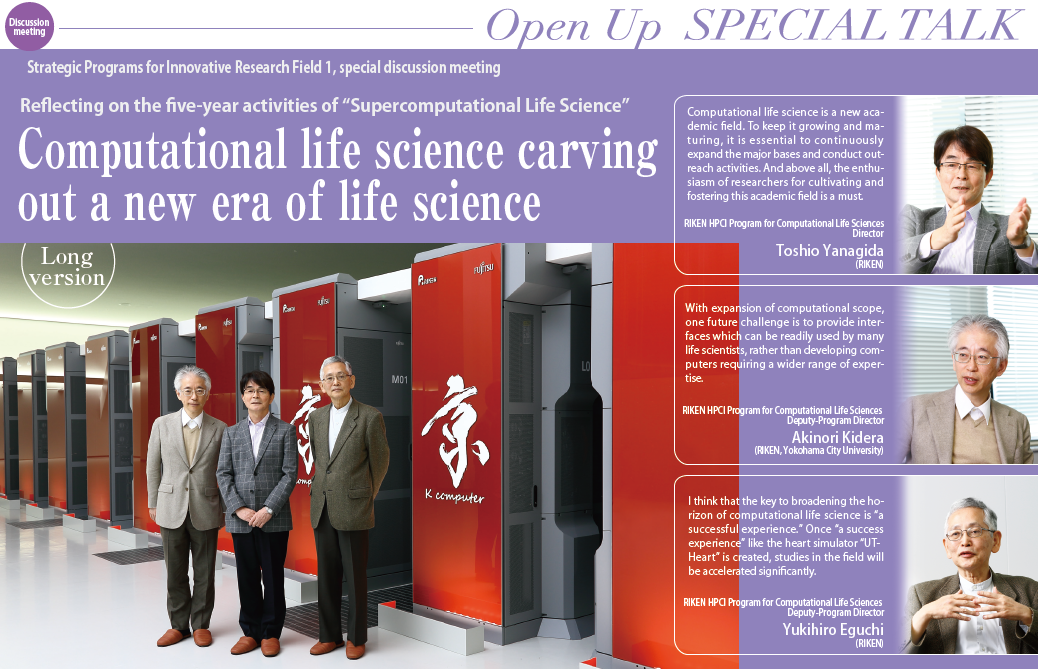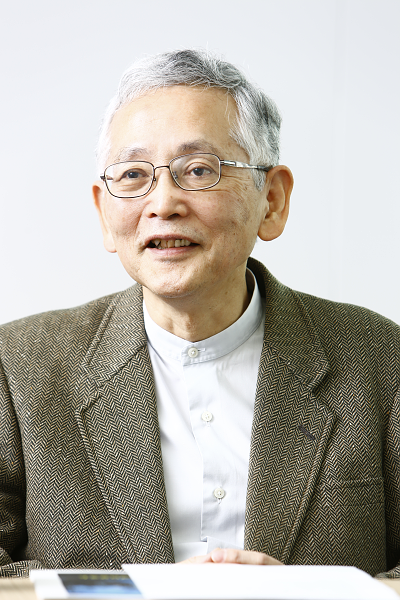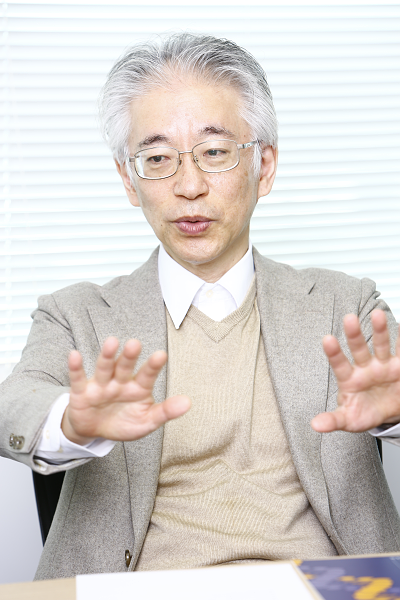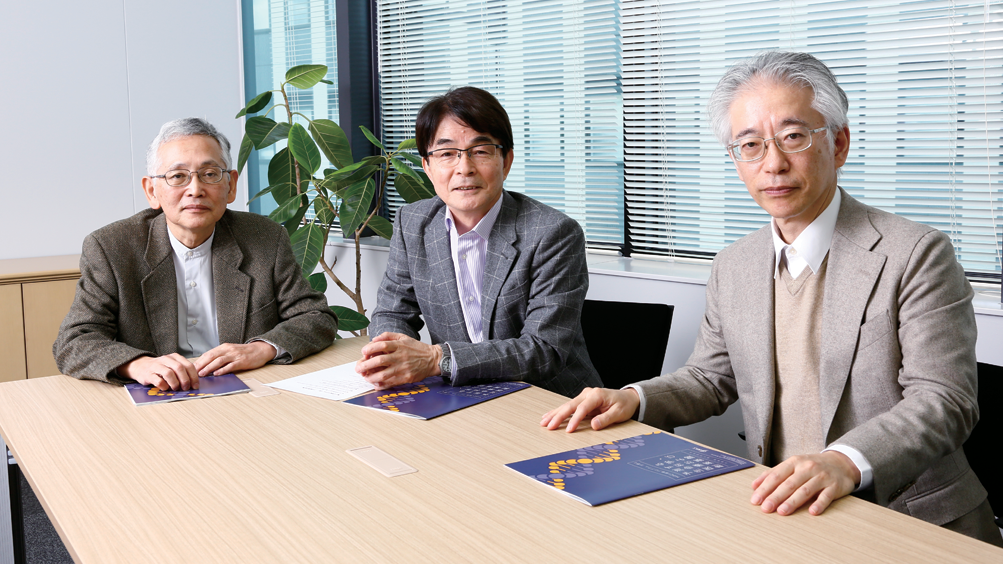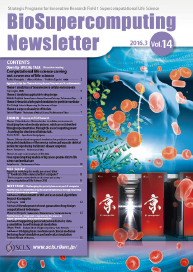− How did you feel when SCLS started?
Yanagida: Actually, when I was appointed as Director out of the blue, I felt a little embarrassed, asking myself why I was appointed as Director in spite of my career as a specialist of single-molecule measurement, and the fact that I had never been professional in computers. I remember that, in my first speech, I said: "I doubt if computational science will ever be so beneficial to life science" (laugh).
Kidera: Yes, I remember that (laugh).
Yanagida: I think I made such a speech because I had an impression that something had been achieved in the field of life science without any deep knowledge, and I felt no need to know complex processes. However, as a matter of common sense, life scientists were empirically thinking that it was time for a change, and obliged to ask themselves what they should do to overcome such a situation. Meanwhile, measurement technologies such as genetic analyses did not stop advancing, and the complexity of data was increasing beyond our understanding. Thus, as the momentum for recognizing the importance of computing increased, I gradually started to gain an understanding. Besides, not only I but others too started to accept "the need to understand complicated things without simplifying them." Traditionally, a researcher simplified a complex phenomenon in his head and did an experiment in line with the hypothesis to find a solution. Every scientist pursues such a method. However, life science is not that simple. No mechanism in that field can be expressed by one simple mathematical formula. More complex analytical work would be required. As a result, we need a computer. Thus, I started to think "Computational science is indispensable for research activities in life science." But when we started, we recognized the sheer lack of computer power. In spite of that, when the members started to make efforts to use the K computer, we recognized the potential of the K computer for giving birth to a science which is different in kind, and the Director changed his mind and got earnest about promoting our efforts. All this happened thanks to the efforts made by those in computational science.
Kidera: The first speech of Dr. Yanagida was so impressive and striking. If I remember correctly, I said: "Please don't say something which would discourage the researchers" after his speech (laugh). His statement was so striking that I couldn't help giving him a warning. Why? Because his statement was right on the mark. In a word, at that time, computational science did not offer any results which would truly contribute to life science. SCLS was preceded by the "Next-Generation Integrated Simulation of Living Matter (ISLiM)," in which we basically conducted software development. Although its achievement forms the basis of this project, we were engaged only in software development but not allowed to use the K computer, so we did not get to attain any achievements which would convince life scientists. Besides, no clear or specific attention was directed toward the kinds of targets, calculation methods or desired achievements. So, as to the achievement of ISLiM, we could only say "We succeeded in developing general-purpose software. It's amazing, isn't it?" As we knew that, we did not want Dr. Yanagida to make a statement which would reiterate that. However, once we started to use the K computer, we marveled at its potential, and found our specific targets and what we should see, while the research system to achieve them was prepared. As researchers knew how they should use the K computer to do computations, they became experienced to some extent and confident, and finally were no longer afraid of what Dr. Yanagida says. That was when the project was halfway finished. At last, the image of life science based on the supercomputer was emerging, and achievements were being made little by little. After that, research activities progressed more rapidly by gaining more momentum. We have had five years so far.
Yanagida:
In that sense, I succeeded in my first speech (laugh).
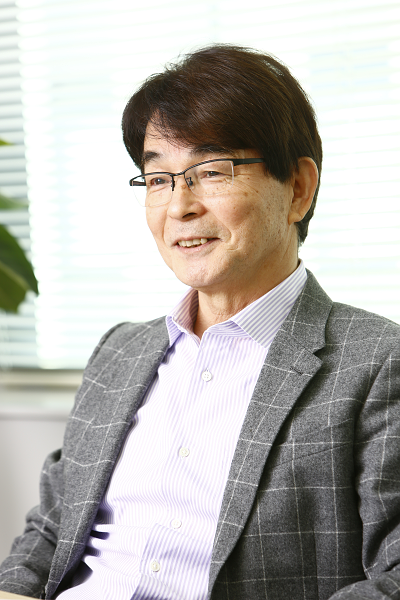
Kidera: Let alone succeeding… Anyway, the strongest impact was your first speech and various organizational changes at the intermediate stage. That is, you stressed the importance of thinking how to collaborate with life scientists who are outside the field of computational science. I believe that the project got rolling smoothly only because of such efforts. Before then, though researchers were not withdrawn into the shell of computational science, they succumbed to a vague and indefinable sense of understanding by creating an excellent piece of software without definitive products. But now, it is different.
Yanagida: No, actually, I said more gently: "Computers are interesting, but they will be more interesting if you apply them to understand the mechanism of life together with life scientists" (laugh). In this way, a new science was born, which was different in kind.
